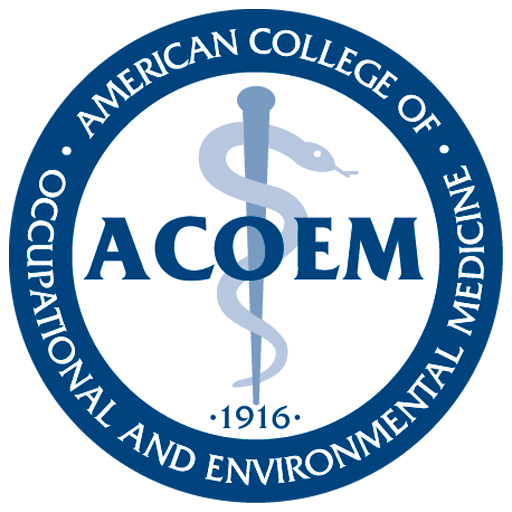
08: Industry Specific Pearls, Agriculture
Agriculture—comprising production, promotion, and distribution of agricultural products—is one of the most dangerous occupations in the United States and around the world. It is also a critical industry in rural United States, accounting for 2.06 million farms and supporting 18.7 million jobs both directly and indirectly through food-related jobs. Because it is such a diverse industry, the agricultural workforce is subject to widely varying occupational and environmental exposures. One unique feature is the number of youth under age 20, and even under 16, involved in potentially hazardous work. The health conditions workers acquire include increased prevalence of respiratory disorders, arthritis, hearing loss, skin cancer, and musculoskeletal disorders.
Recognizing Agricultural Occupational Issues
It is difficult for a health care practitioner to be an expert in all agricultural occupational injuries and illnesses, but the following sections lay out the primary conditions. A basic starting point is obtaining an occupational health history relevant to agriculture. Besides asking whether a patient farms, primary care providers should ask specific questions about the type of farming the worker does, the equipment he or she uses, and what type of (and when) personal protective equipment (PPE) is used. Health care providers can strongly contribute to prevention by asking their patients about their use of PPE, making safety brochures available, and suggesting safety practices. They should also inform themselves about the high-risk practices in the worker’s service area; land-grant university extension services, the National Institute for Occupational Safety and Health (NIOSH) agricultural health and safety centers, and occupational medicine residencies all provide this type of information.
Injuries and Safety
Farming has consistently ranked among the top three most hazardous occupations in the United States. Moreover, the Occupational Safety and Health Administration (OSHA) does not regulate small farms of 10 or fewer employees, which make up the majority of farms and the farm labor population. Dangerous exposures stem from operating dangerous machinery, animal handling, working in extremes of temperature, and working in isolated conditions where emergency care is not readily available.
Respiratory hazards include exposure to toxic chemicals from pesticides and agricultural gases as well as organic dust, causing respiratory inflammation. Physical hazards include suffocation in grain storage bins and other confined spaces, electrocution, and constant solar exposure. Loud-noise exposure is also common, and hearing loss is frequent.
Ergonomic hazards from frequent lifting, bending, stooping, and handling irregularly shaped commodities are a common source of musculoskeletal injuries. Tractor rollovers are a significant cause of fatalities resulting from the continued use of pre-1976 tractors without rollover protective structures (ROPS) or seatbelts. NIOSH estimates that almost all tractor-related fatalities could be prevented by uniformly retrofitting older tractors with rollover protection and by users wearing seat belts.
Workers’ compensation programs are state based, and perhaps no industry features as many state-by- state variations as agriculture does. Providers should be aware of any potential agricultural labor exemptions from workers’ compensation laws that apply to their states, such as a lack of coverage for family members or part-time workers. Farm labor contractors rather than the farm owner are often responsible for providing work-related injury treatment for seasonal and migrant workers. Other obstacles facing agricultural workers are finding physicians and clinics available and willing to handle workers’ compensation injuries and a lack of occupational medicine specialists in rural areas.
Ergonomics and Musculoskeletal Injuries
Musculoskeletal injury–related ergonomic issues, including sprains and strains, are common. Agricultural work involves heavy lifting, much repetition, awkward positions, and bent wrists. There has been an evolution over the last 15 to 20 years from back and knee injuries in smaller dairies to upper-extremity injuries in high-production dairies. The growth of large dairy parlors and the need to milk hundreds of cows daily involves repetitive reach and grasp, resulting in hand-shoulder syndromes, wrist and hand tendonitis, and carpal tunnel syndrome. Production in farms with several thousand hogs is associated with wrist symptoms and back pain. Small vegetable, fruit, and nut production is associated with stoop- and-squat work, resulting in low-back, neck, and knee disorders.
Implementing corrective ergonomic interventions in farming is difficult because the objects being handled are so varied. Ongoing research in university agricultural engineering departments has produced tools to improve work positions and body posture: Modifications include handles on fruit tubs, adjustable floors in dairy parlors, portable stools to avoid squat and stoop, and improved straps on fruit-collection bags.
Respiratory Disease
Workers in small and large-scale farms are at risk from dust inhalation, which leads to respiratory inflammation if proper ventilation and PPE are not appropriately used. Organic dusts are generated by both animal and crop production. Grain dust is biologically active, composed of particulate matter, animal dander, feces, antibiotics, pesticide residue and other agricultural chemicals, bacteria, and fungus. Hog production in particular is associated with chronic bronchitis, mucous membrane irritation, and chronic sinusitis resulting from the inflammatory effects of organic dust. Occupational asthma is much less common, although preexisting asthma can be aggravated by organic dust. Dairy farms are more commonly associated with organic dust toxic syndrome (ODTS) and farmer’s hypersensitivity pneumonitis (FHP), commonly known as farmer’s lung.
Various agricultural exposures can have overlapping clinical presentations of a viral-like syndrome, requiring a good clinical history and differential diagnosis. For example, the clinical presentations of both ODTS and FHP are identical to viral symptoms with shortness of breath and a delayed onset of 4 to 6 hours after exposure. ODTS is a non-immunologic inflammatory response that results from a one-time massive exposure to organic dust; whereas, FHP is a complex immune-mediated inflammatory response resulting in sensitization to organic dust. Eventually, recurrent FHP symptoms and permanent lung damage occur with repeated exposure to lower levels of dust. Properly using personal respirators; increasing ventilation; and drying feed, hay, and grain before storage to decrease bacterial and fungal overgrowth growth can prevent both conditions from occurring. Primary care providers play an important role in discussing the use of appropriate respirators for the type of exposure and conditions and helping patients use them effectively.
Agricultural gases can also cause long-term health effects and death. Hydrogen sulfide is generated by bacterial decomposition of manure and can be lethal in a matter of seconds when agitated or disturbed. Exposure can cause an immediate loss of consciousness called “knock-down” at concentrations above 500 ppm by a mechanism similar to cyanide poisoning. Entering recently filled silos too early can result in toxic exposures to nitrogen oxides, leading to silo-filler’s disease. High concentrations can lead to respiratory distress and loss of consciousness. If the person survives, interstitial fibrosis and scarring can lead to permanent lung damage, called bronchiolitis obliterans. Knowledge of safe entry times and use of gas meters to identify lethal concentrations of gases are critical to decreasing serious injuries and death. Well-run larger operations with designated safety managers should provide training to farm workers about these conditions, but smaller family farms do not always implement this type of training program.
Pesticide Exposures
Pesticides are a critical component of modern agriculture worldwide, even with the increased production of and consumer demand for organic food. Only pesticide applicators licensed by the Environmental Protection Agency (EPA) may purchase and apply restricted pesticides. These users may include commercial pesticide applicators, farm owners, or employees who have become licensed. The primary categories of pesticides include organophosphates (OPs), carbamates, pyrethrins and pyrethroids, herbicides, fumigants, fungicides, organochlorines, disinfectants, and rodenticides.
Insecticides primarily include OPs, carbamates, pyrethrins, and organochlorines.
For humans, the most acutely hazardous pesticides are OPs and fumigants. OPs are unique as the only class of pesticides that has a specific antidote: pralidoxime (2-PAM) to prevent irreversible binding. OP poisoning is recognized by the muscarinic symptoms, which require treatment with massive doses of atropine in addition to pralidoxime. The other pesticide poisonings require nonspecific life-support stabilization and, potentially, hemodialysis. Rescuers and health care providers must avoid contaminating themselves by wearing proper PPE while treating and decontaminating victims.
Contaminated clothing must be treated as hazardous waste. In every state, 1-800-222-1222 is the poison control number and a source of critical information for health care providers treating pesticide poisoning. OPs are also unique among pesticides in that there are specific blood tests, plasma and red blood cell cholinesterase, used to diagnose poisoning and monitor chronic exposure.
Resources
The EPA’s publication The Recognition and Management of Pesticide Poisonings, 6th Edition is a free online resource for health care providers. The 11 NIOSH regional Agricultural Health and Safety Centers are additional sources of information about agricultural health. The AgriSafe Network and Migrant Clinician’s Network are nonprofit organizations that educate health care providers and also can be valuable sources of information. Land-grant university extension departments can be another source of written material about agricultural hazards and preventive measures.
References
USDA Economic Research Service. https://www.ers.usda.gov/webdics/publications/81408/eib- 164_brochure_format.pdf?v=42709.Accessed March 10/2018.
Roberts. JR and JR Reigert, Recognition and Management of Pesticide Poisonings 6th ed. EPA. 2013. https://www.epa.gov/pesticide-worker-safety/recognition-and-management-pesticide-poisonings.
